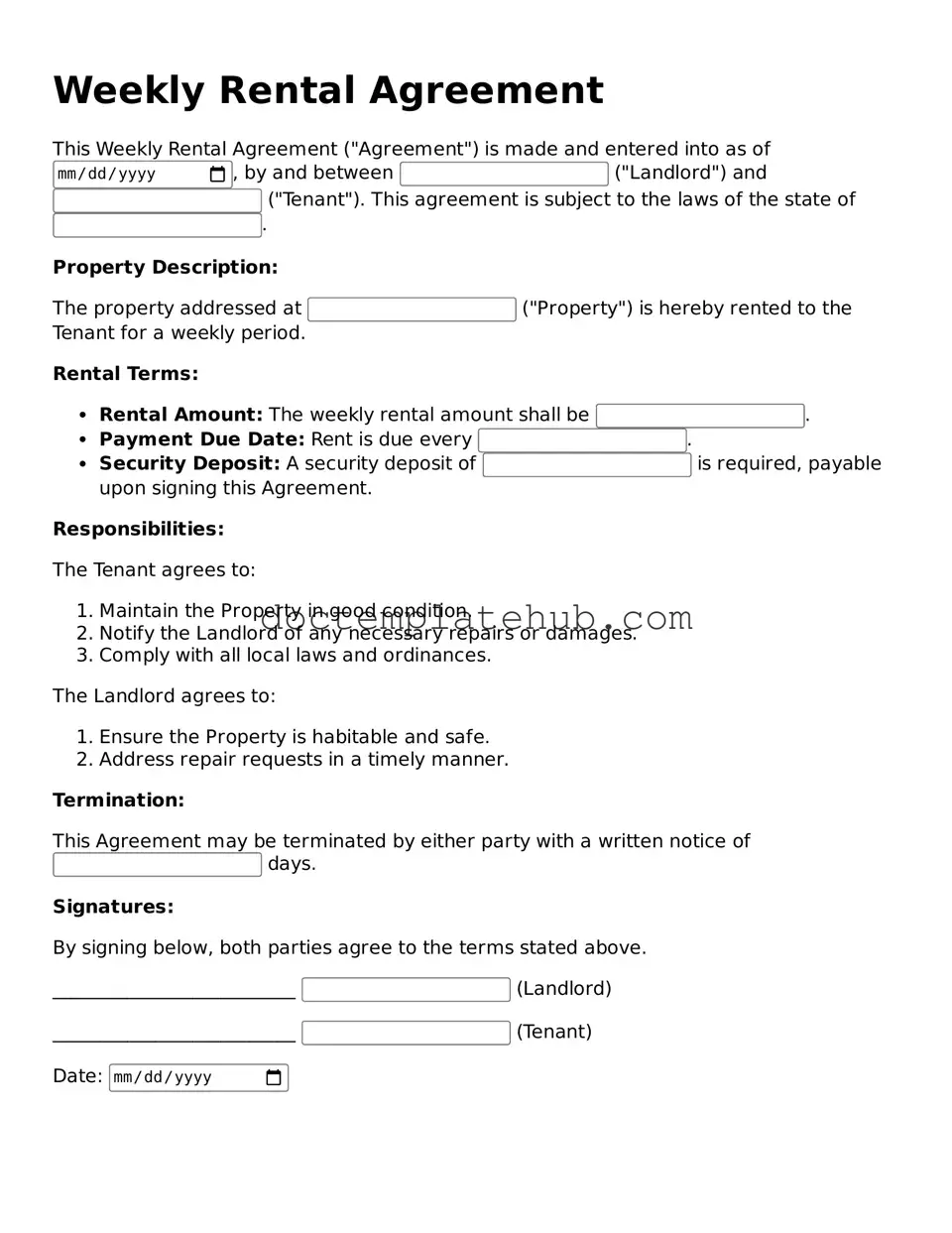What is a Weekly Rental Agreement?
A Weekly Rental Agreement is a legal document that outlines the terms and conditions under which a property is rented on a weekly basis. This agreement typically includes details such as the rental amount, payment schedule, duration of the lease, and responsibilities of both the landlord and tenant. It serves to protect the rights of both parties and provides clarity on expectations during the rental period.
Who should use a Weekly Rental Agreement?
This type of agreement is ideal for landlords who rent out properties on a short-term basis, such as vacation homes, furnished apartments, or temporary housing. It is also suitable for tenants looking for flexible rental options without committing to a long-term lease. Whether you are a landlord or a tenant, this agreement helps ensure a smooth rental experience.
What are the key components of a Weekly Rental Agreement?
A comprehensive Weekly Rental Agreement typically includes the following components: the names of the landlord and tenant, property address, rental amount, payment due dates, security deposit details, maintenance responsibilities, and rules regarding pets and guests. Additionally, it may outline procedures for terminating the agreement and addressing disputes.
How do I fill out a Weekly Rental Agreement?
Filling out a Weekly Rental Agreement involves entering specific information relevant to the rental arrangement. Start by providing the names and contact information of both parties. Next, include the address of the rental property and the agreed-upon rental rate. Be sure to clarify payment methods, due dates, and any additional fees. Finally, both parties should review the agreement for accuracy before signing.
Is a security deposit required?
While not always mandatory, a security deposit is commonly included in a Weekly Rental Agreement. This deposit serves as a safeguard for the landlord against potential damages or unpaid rent. The amount can vary, but it is usually equivalent to one week’s rent. Terms regarding the return of the deposit should be clearly stated in the agreement.
Can the agreement be terminated early?
Yes, a Weekly Rental Agreement can often be terminated early, but the process for doing so should be outlined in the document. Typically, either party may give notice to terminate the agreement, often with a specified notice period, such as one week. It is essential to follow the agreed-upon procedures to avoid any penalties or disputes.
What happens if there is a dispute?
In the event of a dispute, the Weekly Rental Agreement should include a section detailing how conflicts will be resolved. Common methods include negotiation, mediation, or arbitration. Should these methods fail, legal action may be necessary. Having a clear dispute resolution process in place can help both parties handle issues more effectively.
Where can I obtain a Weekly Rental Agreement form?
Weekly Rental Agreement forms can be found through various sources, including online legal document providers, real estate agencies, and local government websites. It is important to ensure that the form you choose complies with local laws and regulations. Customizing a template to fit your specific needs is often a good approach to ensure all relevant details are included.
